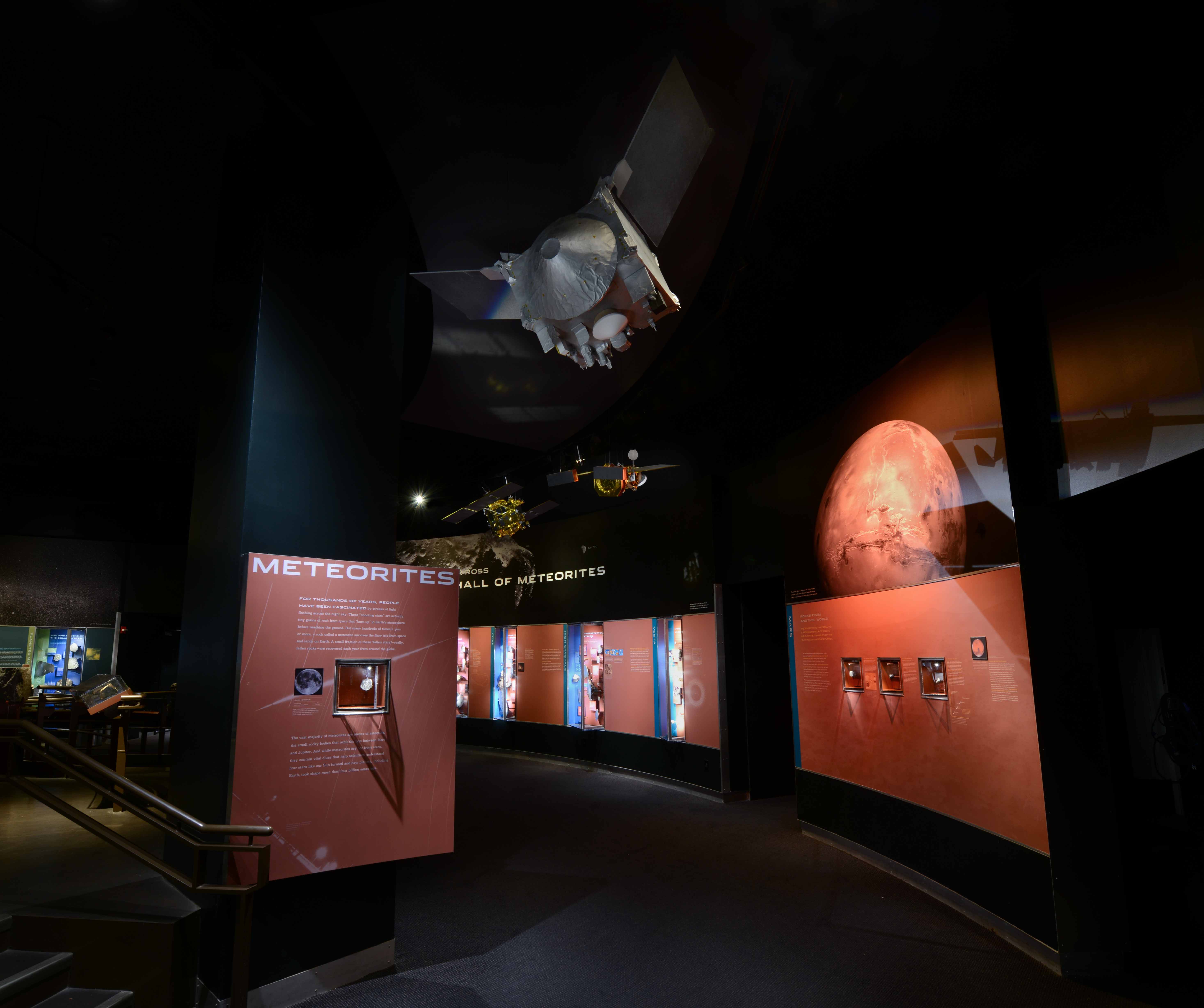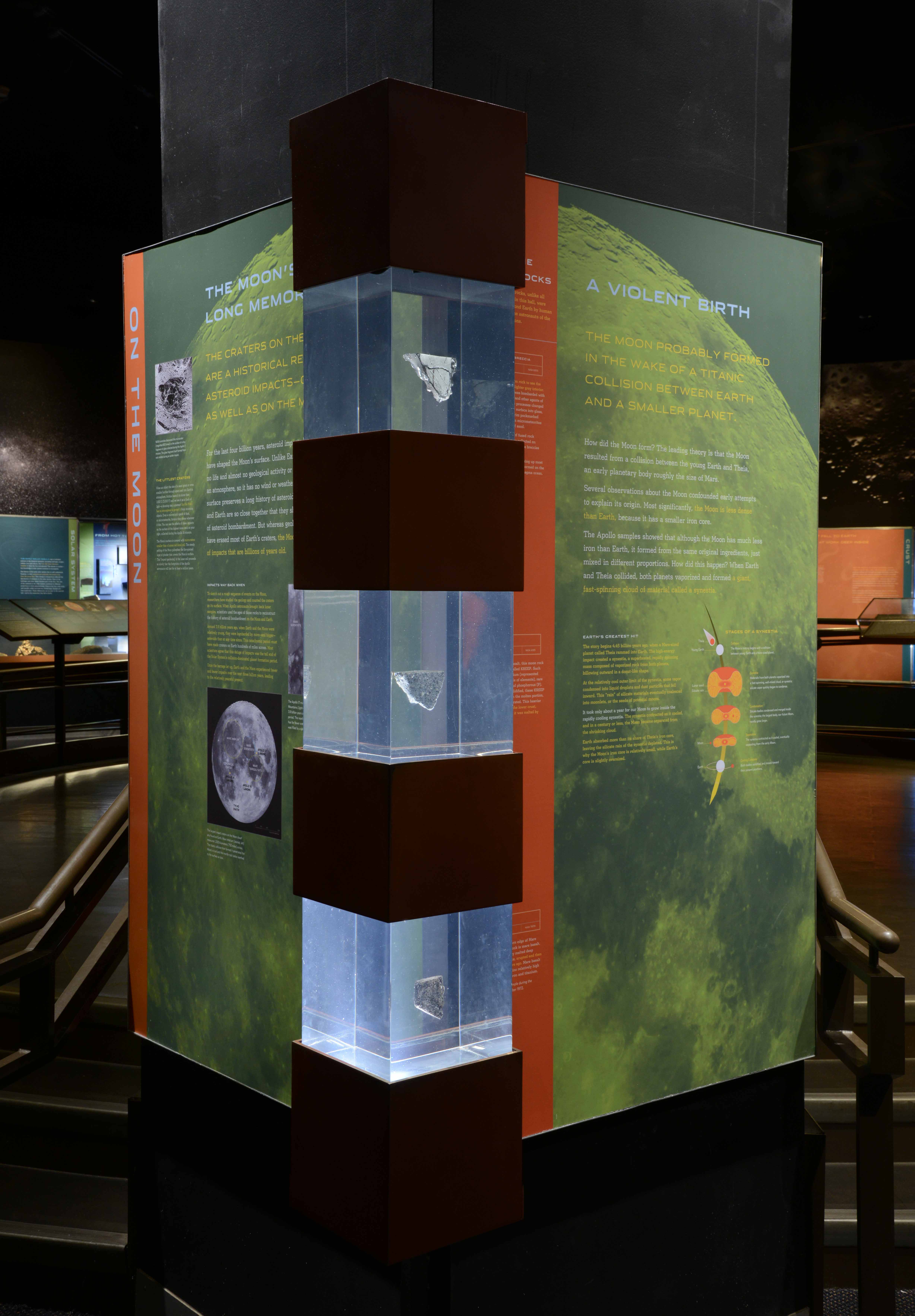Moon Rocks and Lunar Meteorite Are the Stars in This NYC Exhibit

NEW YORK — The American Museum of Natural History here has just finished sprucing up its Hall of Meteorites to highlight a new era of sample-return missions and a new museum acquisition, a lunar meteorite.
The hall, which adjoins the Hall of Gems that is currently under renovation, had been left untouched since 2003. At that time, planetary scientists were limited to accessing only moon rocks gathered by the Apollo missions, and meteorites that fell to Earth, which arrive battered from passing through our atmosphere and lack geological context. Since then, robotic spacecraft have departed for a range of solar-system destinations and brought back souvenirs from their travels that offer new scientific opportunities that the hall redesign highlights.
"It connects what we're doing today to a history of meteorite studies which continues, of course, and these rocks keep giving up new secrets," Denton Ebel, the curator of the museum's department of Earth and planetary sciences, said during a press event held earlier this month. "But sample return is intimately tied to the study of the things that are samples which have been returned but we didn't do it ourselves."
Related: Mars Meteorites: Pieces of the Red Planet on Earth (Photos)
The section highlighting sample-return missions is decorated by three spacecraft models dangling from the ceiling: NASA's Stardust, which sampled interstellar dust in the early 2000s; Japan's Hayabusa, which visited an asteroid called Itokawa in 2005; and NASA's OSIRIS-REx, which is currently circling an asteroid named Bennu. The section also includes a new interactive panel featuring information about Mars rovers and sample-return missions.
A second interactive panel focuses on past asteroid impacts and the threat of future similar events — from the Chicxulub impact that wiped out the dinosaurs to the close flyby of an asteroid named Apophis that will occur in 2029. After all, meteorites are a tangible reminder that occasionally, hunks of rock flying through space hit Earth.
But our planet is large enough that, usually, meteorites don't prompt much drama. The museum's newly acquired lunar meteorite, for example, was collected in northwestern Africa. It's a sample of lunar breccia — the geological term for a jumble of different rock types stuck together — but scientists can't pin down precisely where it came from.
Get the Space.com Newsletter
Breaking space news, the latest updates on rocket launches, skywatching events and more!

That uncertainty highlights the enduring gift of the moon rocks collected by the Apollo program astronauts between 1969 and 1972: Scientists know precisely where they came from. The museum's collection includes four of these samples, all of which are now on display, three in the Hall of Meteorites.
These samples date to the Apollo 14, 16 and 17 missions, and offer visitors a look at the moon's geological range. One pale sample represents the lunar highlands, which are dominated by the mineral feldspar and geologically resemble the rock of the Adirondacks, Ebel said. Another sample represents the basalt of the lunar mares or seas, where lava filled in old impact craters.
The last is a sample of the potassium- and rare-earth elements-rich rock type called KREEP. Scientists believe that studying this recipe of rock may help them to decipher the secrets of the moon's later history, and how the surface has changed over time.
But although they're the highlight of the display, the moon rocks announce their presence quietly, floating in a stack of clear plastic cubes near the center of the room.
"There's no neon sign above with an arrow," Ebel said. "I lobbied for that."
- Apollo 11 at 50: A Complete Guide to the Historic Moon Landing
- NASA Fed Apollo 11 Moon Rocks to Cockroaches (And Then Things Got Even Weirder)
- Mysteries of the Moon: What We Still Don't Know After Apollo
Email Meghan Bartels at mbartels@space.com or follow her @meghanbartels. Follow us on Twitter @Spacedotcom and on Facebook.
Join our Space Forums to keep talking space on the latest missions, night sky and more! And if you have a news tip, correction or comment, let us know at: community@space.com.

Meghan is a senior writer at Space.com and has more than five years' experience as a science journalist based in New York City. She joined Space.com in July 2018, with previous writing published in outlets including Newsweek and Audubon. Meghan earned an MA in science journalism from New York University and a BA in classics from Georgetown University, and in her free time she enjoys reading and visiting museums. Follow her on Twitter at @meghanbartels.









